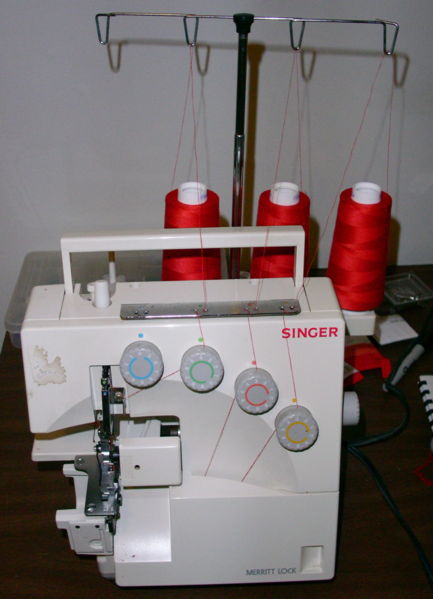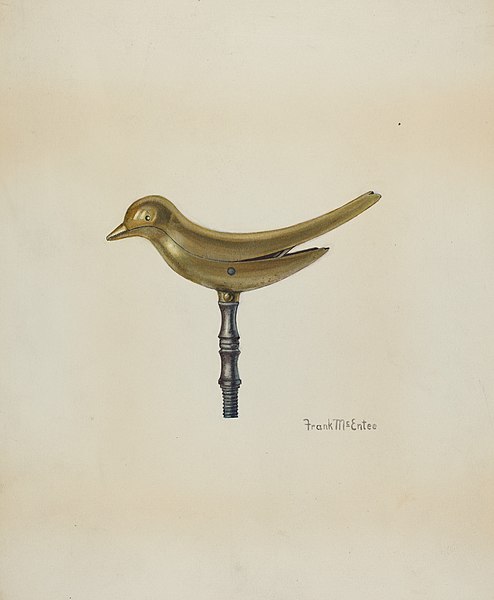An overlock is a kind of stitch that sews over the edge of one or two pieces of cloth for edging, hemming, or seaming. Usually an overlock sewing machine will cut the edges of the cloth as they are fed through, though some are made without cutters. The inclusion of automated cutters allows overlock machines to create finished seams easily and quickly. An overlock sewing machine differs from a lockstitch sewing machine in that it uses loopers fed by multiple thread cones rather than a bobbin. Loopers serve to create thread loops that pass from the needle thread to the edges of the fabric so that the edges of the fabric are contained within the seam.
The purl stitch.
An overlock machine.
A Zoje 5 cone industrial overlocker
1-thread, 5/8″ wide, 12 stitches per inch
Sewing is the craft of fastening or attaching objects using stitches made with a sewing needle and thread. Sewing is one of the oldest of the textile arts, arising in the Paleolithic era. Before the invention of spinning yarn or weaving fabric, archaeologists believe Stone Age people across Europe and Asia sewed fur and leather clothing using bone, antler or ivory sewing-needles and "thread" made of various animal body parts including sinew, catgut, and veins.
Sewing Fisherman's Wife by Anna Ancher, 1890
Seated woman sewing a kimono, Utagawa Kuniyoshi, in the early 19th century. Different cultures have developed diverse sewing techniques, from methods of cutting fabric to types of stitches.
A sewing bird or sewing clamp provides a "third hand" to hold fabric taut. Watercolor by Frank McEntee, National Gallery of Art, Index of American Design.
Early 20th century sewing in Detroit, Michigan








